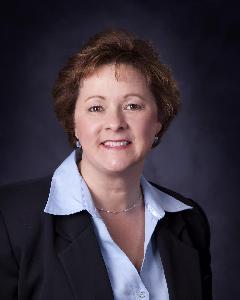08 Communication Options - What Does That Mean?
So Your Child has a Hearing Loss: Next Steps for Parents
School systems use a number of systems of communication for children who are deaf or hard of hearing. As a parent, you will find the information on communication options often conflicting and confusing, and one of your most difficult tasks will be to decide on the best option for your child. This may, in part, be dictated by what is available in your community. Large metropolitan area may offer several options.
Auditory/Oral - These programs teach children to make maximum use of their residual hearing through amplification (hearing aids or cochlear implants), to augment their residual hearing with speech (lip) reading, and to speak. This approach excludes the use of sign language. The philosophy behind the Auditory/Oral method is to prepare children to work and live in a predominately hearing society.
Auditory/Verbal - The auditory/verbal approach is similar to the auditory/oral approach, except it does not encourage lip-reading. This method emphasizes the exclusive use of auditory skills through one-on-one teaching. It excludes the use of sign language, while emphasizing the importance of placing children in the regular classroom ("mainstream education") as soon as possible.
Cued Speech - This is a visual communication system combining eight handshapes (cues) that represent different sounds of speech. These cues are used simultaneously with speaking. The hand shapes help the child distinguish sounds that look the same on the lips-such as "p" and "b". The use of cues ignificantly enhances lip-reading ability. It is a particularly good system for
a child who may not be able to learn entirely though amplified earing.
Total Communication - Total communication uses a combination of methods to teach a child, including a form of sign language, finger spelling, speech reading, speaking and amplification. The sign language used in total communication (SEE sign) is not a language in and of itself, like American Sign Language, but an artificially-constructed language following English grammatical
structure.
American Sign Language (Bilingual/Bicultural) - In this method, American Sign Language is taught as the child's primary language, and English as a second language. American Sign Language is recognized as a true language in its own right and does not follow the grammatical structure of English. This method is used extensively within the Deaf community, a group that views itself as having a separate culture and identity from mainstream society.
If you feel confused at this point, you are having a normal parental reaction! Ninety percent of parents who have a child with a hearing loss possess normal hearing themselves. Your knowledge of hearing loss probably extends to having seen it profiled occasionally on television or in the movies. The variety of educational options may make little sense to you right now. Which education methodology should you choose for your child? Should you enroll your child in the public program or with a private therapist or in a private school?
These decisions will be clearer after you've done some homework. As you gain knowledge, the right decision for you and your family will be clearer. We suggest that you take the following steps to help in gathering information in order to make an informed decision.
- Read about the different educational options. A good book to start with is Choices in Deafness by Sue Schwartz, distributed by AG Bell. The book presents parental and professional views on all of the major educational options. You can also request publication catalogs and free brochures from AG Bell and other national organizations listed in the reference section of this booklet.
- Visit the available programs in your community. Start by calling your local school district and asking for the person in charge of parent/infant programs for children with hearing loss. Make an appointment to talk with the person in charge and visit the program. Call AG Bell for a list of private programs in your area. Even if you are unsure about a private option, visiting such a program gives you a frame of reference for evaluating your public school's program and for requesting specific accommodations.
- Communicate with other parents and professionals about local programs. What does your audiologist think of the local school program? Is there a better one in a nearby school system? Ask your audiologist to connect you with a parent of a slightly older child who could tell you about the local programs. Find out about the quality of the programs beyond the preschool level. Another good source of information is AG Bell chapter members.
- After you have called or visited programs in your area and done some reading, make a list of educational options available, along with your impression of the quality of each program. The list might look like the one on the one below.
| Communication Options Checklist | ||
| Available in my Community? |
My Impression | |
| Auditory-Oral | ||
| Auditory-Verbal | ||
| Cued Speech | ||
| Total Communication | ||
| American Sign Language | ||
Perhaps you have decided on an educational option that is not available in your community, or does not seem to have quality staffing and programming. If so, are you willing to relocate? As your child gets older, would you consider a residential program?
© 2011 by Alexander Graham Bell Association for the Deaf and Hard of Hearing


